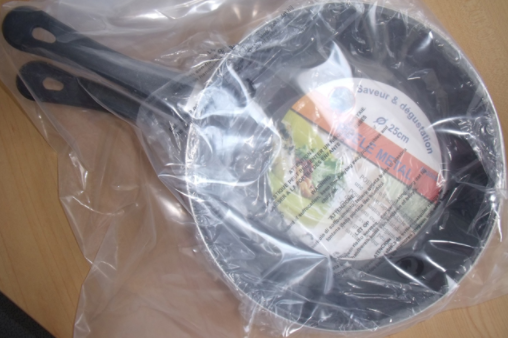Product specifications a small (albeit important) step that requires a bit of technical input, but one that can have a vast implications for the quality of your end product.
Importers today are becoming more aware of defining specifications more clearly than before, so as to manage their product quality more effectively.
You also cannot simply think that showing your supplier an image of the product you would like them to manufacture and expect it to arrive perfectly.
Why?
Sourcing cookware is complex in nature, but sourcing abroad from a foreign country to your own has its own set of challenges that you need to be aware of.
In this blog post, I seek to outline the importance of cookware product specifications for your sourcing strategies and how these industry best practices can set your brand ahead of the rest.
Whether you choose to source closer to home or abroad, there is no doubt about the complexities in communication at the best of times. In highlighting the challenges of sourcing abroad we are able to easily identify opportunities for turning these around.
Product quality challenges – The material chosen for production will influence the price and quality of the product. The cookware will need to be tested for extreme high heats and ensure that it is stain resistant when brought into contact with certain liquids. If there are plastic handles on the cookware they will need to be heat resistant.

Your cookware should also be chemically tested in a lab to ensure the materials used are in compliance with European regulation.
Compliance problems – You need to ensure that when you select your supplier they are in compliance with all social and environmental standards as internationally laid out. You may need to give them time achieve the relevant compliance documents. Failure to do this and you put your brand and your consumers in a risky position, where trust in your brand is potentially compromised.
In sourcing your cookware abroad you also need to ensure that your products are in chemical compliance according to the chemical FDA and the EU food grade requirements.
It will be important to make sure that you communicate your expectations to your supplier clearly and effectively so as to minimize any comebacks and problems.
Operations and Logistics – Sourcing your cookware abroad also comes with its fair share of logistical nightmares; from import and export licenses to shipping and packing of containers.
Language – If you are sourcing cookware abroad, the likelihood is that you will encounter language problems, but you can overcome this through the following;
Different time zones – If you are based in Europe and sourcing in Asia you will be facing vastly different time zones.
You can send an employee to interact with your supplier on the ground. This is a great opportunity to meet your supplier in person and also see the state of your chosen factory.
Now that we have taken a look into the common challenges of sourcing cookware abroad, let’s take a dive into why your cookware product specifications are crucial in defining your products level of quality.
How do you define your product specifications?
You can go about defining your specifications by creating a document that is inclusive of:
We have included an example of what a product spec sheet may look like; you may want to add or subtract from this, but this is to give an idea of how you can go about filling one out;

What happens if you don’t send through your product specifications to your supplier?
Defects, recalls, a loss in revenue, brand damage? Not an ideal picture, so let’s take a look at the following examples that highlight the importance defining your product specs clearly and what can happen if you don’t;
A material problem
The below frying pan poses a risk of burns because the plastic handle becomes too hot, reaching a temperature of 94°C, and no indication is given in the information at the point of sale that the product should be used exclusively on gas or electric (spiral resistance) hot plates.
This product does not comply with the relevant European standard EN 12983 and therefore had to be recalled.
Without specifying the materials needed to create a safe and compliant frying pan destined for the European market place you open yourself up to costly mistakes that can lead to serious loss in revenue and loss of trust in your brand.

Product design issue
This frying pan is unstable and can tip over unless there is sufficient weight in the frying pan. This unstable design has resulted in serious burn risks as well as the product being recalled.
An expensive mistake to make.

As mentioned above if you are sourcing in Asia, you will encounter language and cultural barriers. There are steps you can take to ensuring your product is perfectly designed and compliant for its destination market.
If you are confident in the product specifications you send to your supplier, be sure to ask them to date and sign it to indicate their acceptance and understanding of your specifications.
Sourcing your cookware and kitchenware abroad can have many complexities from language and cultural barriers to the quality and compliance of your product. Developing a sourcing strategy that is based on sound industry best practice will assist in improved product quality that is set to positively position your brand in the marketplace.
Defining your cookware product specifications will go a long way in ensuring low defect rates, you can go about this by;
In clearly defining your cookware product specifications with your supplier you put yourself in a positive position for competitive growth and you also protect yourself from any unnecessary risks.

Want to know more about one of our many services? Contact us to find out more information about what API can do for your company today.
Address
Copyright © 1981 – 2022 API. All Rights Reserved.